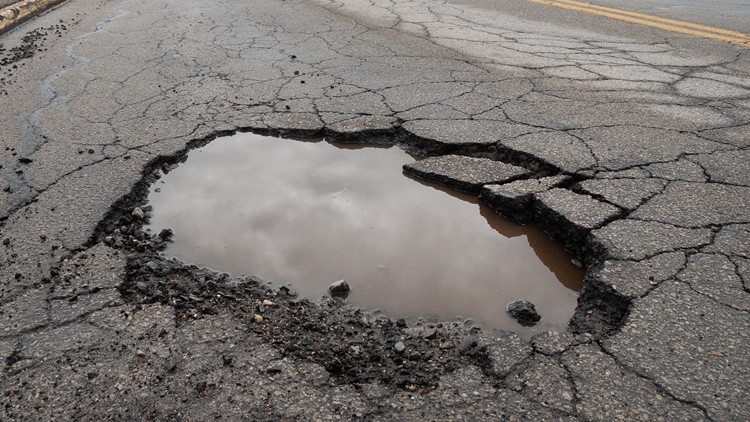KNOXVILLE, Tenn. — This week, a winter storm dumped several inches of snow onto East Tennessee and brought temperatures down to the single digits, effectively freezing roads and causing dangerous driving conditions.
A few days since the snow first fell, crews are working to treat roads and plow off the snow. However, as crews work to clear the roads of ice and snow, the Tennessee Department of Transportation warned drivers to be wary of another concern — potholes.
They form when water seeps into the pavement. When temperatures drop below freezing, the water turns to ice and expands. As it expands, it effectively pushes up against the pavement — nudging it. Then, when the temperatures rise again, water melts and the pavement has nothing supporting it.
Once the pavement is loose, it can be knocked out of place by passing cars, resulting in a pothole. TDOT crews may patch large potholes as they appear, but generally, they wait until bad weather clears to fully repair roads.
"Any patches that are going to be done would basically be temporary patches, meaning that our crews would go over a pothole one day and if you get more precipitation and all the cars going over that pothole, they may have to go back over and patch it a couple of days later," said Mark Nagi, a spokesperson for TDOT.
If drivers see potholes on the road, the best thing they can do is slow down and move over around it.
Black ice will also be a concern as East Tennessee thaws from the winter storm. It's effectively a slippery, transparent glaze that freezes over roads and usually forms as a result of snow melting and refreezing. Cars may lose traction on black ice, resulting in them sliding and losing traction.
Drivers should slow down and watch out for patches of black ice during winter weather, while also leaving more room between them and other drivers. It mostly forms at night, as temperatures dip and water is able to freeze.
Drivers who encounter black ice should avoid panicking. They should not hit the brakes or turn the steering wheel, which could cause them to totally lose control of a vehicle. Instead, they step off the accelerator and slow down naturally, and shift into a lower gear if they're able.



